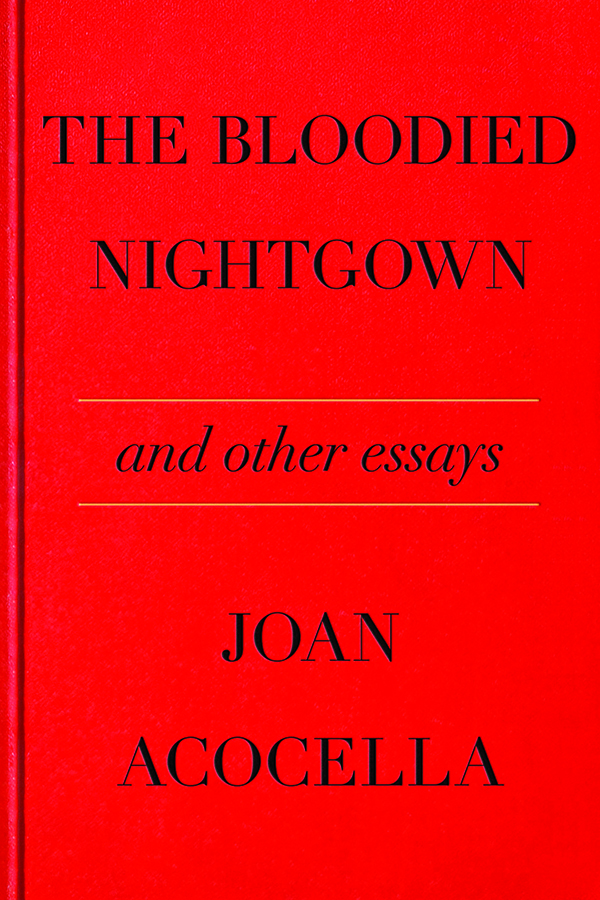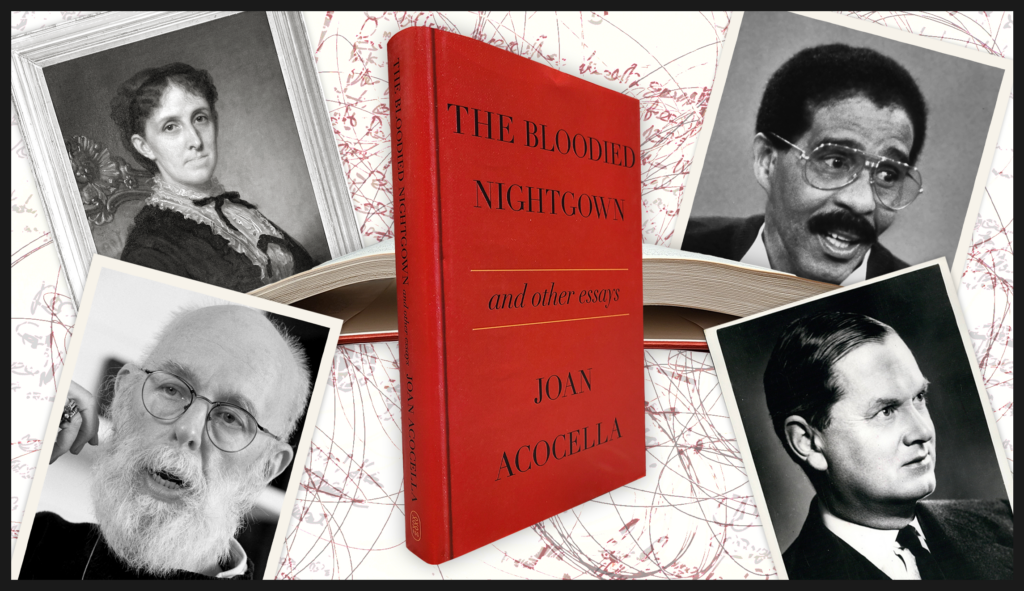These days, we have no shortage of writers who earn their wages by offering opinions, reviews, and hot takes, but those belonging to the higher calling of the critic are in short supply. The critic does not merely opine but observes his or her subject intently, fairly, and mercilessly. The critic may specialize in one subject but ought to be conversant in many. The critic is unbowed by consensus, editorial influence, reader feedback, or social media outrage. Well, do you know of anyone who fits the bill these days?

Indeed, the golden age of the critic seems to have passed. Pauline Kael is dead. So is Anatole Broyard. Joan Didion, John Leonard, and Hugh Kenner — that cadre of critics who got their start at, or were associated with, National Review — are each gone. The last charitable, trustworthy film critics to serve at the New York Times, Vincent Canby and Janet Maslin, resigned from their posts in 1994 and 1999, respectively. Imagine, a quarter-century without solid movie reviews at the Gray Lady!
And now, we must mourn long-tenured New Yorker staff writer Joan Acocella, who died of cancer in January at age 78 and who may have been the last regular contributor to make the once-august publication founded by Harold Ross still worth picking up from time to time. Although ballet and dance were widely regarded as her areas of expertise, Acocella was capable of writing engagingly and credibly about countless cultural topics. Her latest and now final collection of reviews and essays has just appeared.
Even if the new book were not forced to serve as a valedictory for Acocella, it would still have functioned as a last gasp of the sort of criticism in which Acocella excelled: open, intelligent attempts to engage with personalities and ideas with which the critic may or may not be in personal sympathy. We aren’t always sure, and it never matters. She calls balls and strikes. Her equitable sensibility is on vivid display in the title essay, a meditation on Bram Stoker’s Dracula and its enduring cultural currency. At one point, Acocella goes on for two paragraphs about the various defects of the novel, its overstuffed plot and overdone oratory, but then changes course and admits its “psychological acuity.” “We cannot help but be impressed by Stoker’s representation of the amoral contrivances of love, or of desire,” she writes. And when a critic so evenly presents her objections to and defenses of a given work, we know we are in good hands.
Acocella aims to get across what the art is about and what the person who made the art is about, too. It is her interest in the latter quality that sets her apart from many contemporary so-called critics, who are happy to dismiss books, movies, or plays because of the alleged misdeeds of their makers but are firmly opposed to understanding those works through the lives and worldviews of their makers. From this, Acocella dissents. In a wonderfully concise introduction to the essays here, she locates the origin of the present disinterest of “the artist’s inner life” to the modernism of T.S. Eliot. “In the 1980s, the notion of an artwork undefiled by the artist’s experience gave birth to an even weirder child, the postmodern idea — or, in any case, Roland Barthes’s idea — of the ‘death of the author,’” she writes, but instead of arguing the point on its merits, she more or less spends much of the rest of the book establishing just how very relevant and vital “the author” still is.

How did Agatha Christie become the 20th century’s chief creator of detective stories? In a piece occasioned by a pair of books about Christie, Acocella reckons it may have had something to do with the writer’s solitary childhood (“She also communed, for long periods every day, with imaginary companions: kings, kittens, chickens”), her morbid disposition (“She adored funerals”), and, frankly, the commercial appeal of the genre itself (beloved by the common man but also venerated by Auden and Eliot). These biographical insights only enhance our understanding of the novels, of which Acocella is a keen observer: Few have exotic locales (“Most of them are set in plain old England”), and scarcely any give their killers unusual motives (“Rather boringly, the most common motive for homicide in Christie is money”). But nearly all manage to confound while they are unfolding, as any detective story should. “I read all sixty-six of Christie’s detective novels, and I have guessed exactly two of the culprits,” Acocella writes. “I’ll bet that this is a fairly typical record.”
There is nothing typical about Acocella’s wide range of subjects, which include everything from the Book of Job to Richard Pryor. She has the gift of plunging herself into the world she is writing about and reporting back on it with authority. One of the best pieces here is a review of a family history of five generations of the Waugh family, each member more fascinating than the last. For example, there is biographer Arthur Waugh, whose exorbitant affection for his eldest son Alec (“He seems to have spent almost every hour of his nonwork time talking to the boy, reading to him, taking walks with him”) is contrasted with his freezing out of his youngest, the great novelist Evelyn. Again, biography informs criticism: Evelyn, the most ruthless of satirists, exacted revenge by parodying his father Arthur in the form of “the most boring and sinister character in all his fiction,” the illiterate pedant Mr. Todd in A Handful of Dust.
Blessedly, Acocella reads writers of the past through the prism of their time, not ours. The profoundly politically incorrect Waugh, Acocella writes, “didn’t just make fun of today’s targeted minorities; he made fun of everyone.” Besides, the Europeans come off worse than the Africans in Waugh’s brilliant satire Black Mischief, she adds: “When, at the end of the book, Lady Courteney’s nymphomaniac daughter is eaten for dinner at a tribal gathering, we don’t cry for her.”
In the present collection, Acocella is particularly good in dealing with writers whose work was saturated with religious convictions, especially newfound ones. Evelyn Waugh and Graham Greene are among those Catholic converts who perceived, as Acocella puts it, that the church “would provide a suitably august arena for the transition to another sort of religion: doubt, anxiety, existentialism.” She properly diagnoses Greene’s central concern: the intersection of the “torments of the soul” with the “frenzies of the flesh.” But she is equally good with the intensely Protestant American novelist Marilynne Robinson. “Robinson writes about religion two ways,” Acocella writes. “One is meliorist, reformist. The other is rapturous, visionary. Many people have been good at the first kind; few, today, at the second kind.” It’s the second kind that distinguishes Robinson’s work.
CLICK HERE TO READ MORE FROM THE WASHINGTON EXAMINER
Perhaps because of these pieces’ origins as magazine pieces, Acocella can be fleet and cutting in her judgments. About Louisa May Alcott’s Little Women sequel Jo’s Boys, Acocella writes: “You can sense how bored she is, and how much she wants to go upstairs and take a nap.” Not infrequently, Acocella’s summaries of the subjects of the biographies she is sometimes reviewing are better than the biographies ostensibly under consideration. She is far funnier, sharper, and more astute about Edward Gorey than the Gorey biography she is charged with considering, about which she says this: “[Biographer Mark] Dery’s book is often fun, but that’s mostly because Gorey was fun.”
One persistent theme in these pages is how artists tend to get weaker as they get older. We hear about how Elmore Leonard began losing his edge near the end and how Evelyn Waugh was keen to die. For her part, Acocella didn’t and wasn’t. And for our part, we were far from ready to say goodbye.
Peter Tonguette is a contributing writer to the Washington Examiner magazine.

